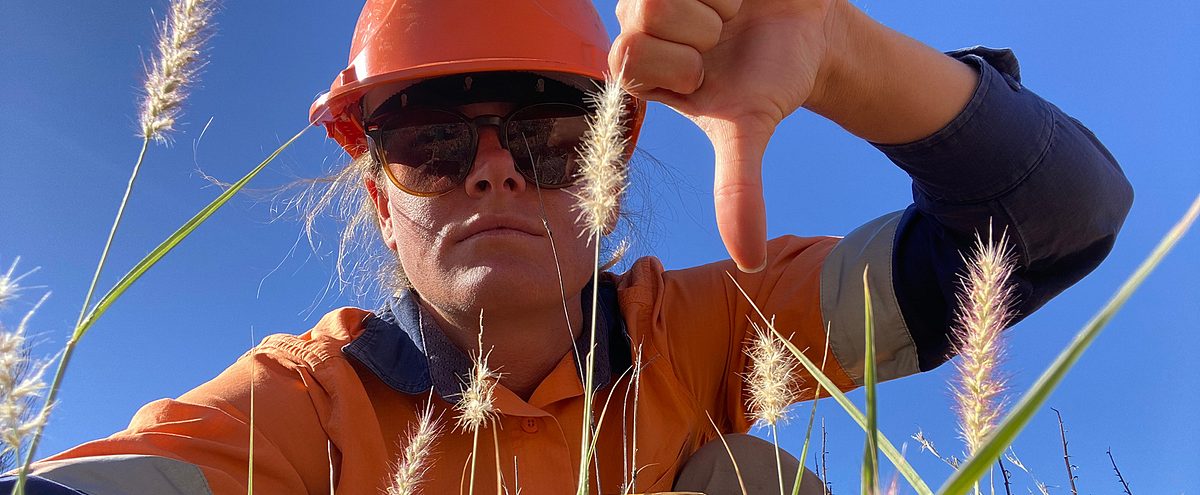
Buffel grass
Buffel grass (Cenchrus ciliaris and Cenchrus pennisetiformis) is an introduced perennial tussock grass that has emerged as a significant threat to the Country and culture of remote communities in the Great Victoria Desert.
Known in Pitjantjatjara as mamu tjanpi or tjanpi kura – devil grass or bad grass – buffel grass is now recognised as one of the worst environmental threats in Australia’s arid rangelands.
In 2015, South Australia was the first jurisdiction in Australia to make buffel grass a declared weed, and the Northern Territory followed in 2024.
It is fast-growing, outcompetes native grasses and shrubs, and makes it difficult for animals and people to move across the landscape. It burns hotter and more frequently than native vegetation, killing larger shrubs and trees, and regenerates more quickly after fire events, transforming diverse healthy landscapes into grasslands, creating a monoculture that devastates natural ecosystems.
Help stop the spread of buffel grass by keeping to tracks and avoiding driving through grass. Report any sightings on 08 8463 4843 or send us an email.
Identifying buffel grass
A detailed 3D model of buffel grass has been developed by Mallee Conservation. Click here to see the model.

What we’re doing to keep the GVD buffel free
Alinytjara Wiluṟara Landscape Board and Aṉangu ranger groups have made buffel grass management in the southern GVD a priority for over 10 years. Before buffel grass was even declared a weed, AW sourced funding, gathered support from partners and buy-in from landholders for buffel grass control. Early intervention has ensured that the GVD remains one of last desert regions in the rangelands to have a limited distribution of buffel grass.
Working together is essential in the battle against buffel. We share knowledge and surveillance across the various organisations involved, planning and supporting each other across the GVD.
In the cooler months, we conduct surveillance, travelling thousands of kilometres on rough, remote roads to spot outbreaks before they can spread. We also conduct cool, low intensity burns to reduce biomass and encourage young shoots which are more susceptible to herbicide.
Remote weather stations allow us to monitor conditions and time our spraying operations for optimum results.
Spraying takes place throughout spring, summer and autumn. It’s demanding work, often in hot conditions in isolated locations.

Our partners in the buffel battle
Buffel grass poses a major threat to the Great Victoria Desert and no single group can succeed alone. We’re grateful for the support of Far West Coast Aboriginal Corporation Rangers, Oak Valley Rangers, Spinifex Land Management, APY Land Management, Yalata Rangers, National Parks Rangers and local contractors.
A strategic approach
The Alinytjara Wiluṟara Landscape Board is leading a multi-agency response to buffel grass in South Australia, in partnership with the South Australian Arid Lands, Northern and Yorke, and Eyre Peninsula Landscape Boards, along with Department for Environment and Water, Department for Infrastructure and Transport, Department for Energy and Mining and the Department of Primary Industries and Regions.
The board is advocating a coordinated national approach to buffel grass, which is present in every mainland state and territory. This includes nominating buffel grass as a Key Threatening Process under the Environment Protection and Biodiversity Conservation Act 1999 (EPBC Act), and submitting an Expression of Interest to the Australian Government for the nomination of buffel as a Weed of National Significance.
The board is also advocating for buffel to be considered as a biological control target under the National Biological Control Pipeline Strategy.


